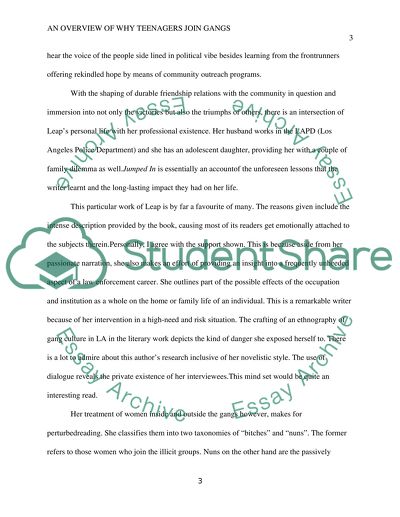Cite this document
(“Book Jumped in what gangs taught me about violence, drugs, love, and Report/Review”, n.d.)
Retrieved from https://studentshare.org/sociology/1634460-book-jumped-in-what-gangs-taught-me-about-violence-drugs-love-and-redemption-by-jorja-leap-title-an-overview-of-why-teenagers-join-gangs
Retrieved from https://studentshare.org/sociology/1634460-book-jumped-in-what-gangs-taught-me-about-violence-drugs-love-and-redemption-by-jorja-leap-title-an-overview-of-why-teenagers-join-gangs
(Book Jumped in What Gangs Taught Me about Violence, Drugs, Love, and Report/Review)
https://studentshare.org/sociology/1634460-book-jumped-in-what-gangs-taught-me-about-violence-drugs-love-and-redemption-by-jorja-leap-title-an-overview-of-why-teenagers-join-gangs.
https://studentshare.org/sociology/1634460-book-jumped-in-what-gangs-taught-me-about-violence-drugs-love-and-redemption-by-jorja-leap-title-an-overview-of-why-teenagers-join-gangs.
“Book Jumped in What Gangs Taught Me about Violence, Drugs, Love, and Report/Review”, n.d. https://studentshare.org/sociology/1634460-book-jumped-in-what-gangs-taught-me-about-violence-drugs-love-and-redemption-by-jorja-leap-title-an-overview-of-why-teenagers-join-gangs.


